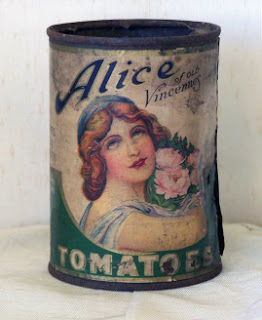I covered a lot about James Maurice Thompson in earlier blogs, as well as other famous Fairfield natives. There are some more modern icons who didn't get a mention, mainly because ... I never got around to it. Hoping you will get around to it, though, and keep the Fairfield story alive. Check out the links I provide as well as the menu items on the right.
You will NOT run out of interesting finds.
One of the most enigmatic figures of 19th century Fairfield is Thompson, Civil War veteran, legislator, lawyer, author, historian. His "Alice of Old Vincennes" was considered a classic for its time in 1900. Thompson was considered something of an expert in the sport of archery and his history textboook is chock full of interesting details. Plus, he was a great writer. He comes from curious stock. A compelling figure.
He was born in Fairfield in 1844 and the hut where he was spawned was moved to Vincennes in the early 1970s just prior to the completion of Brookville Lake. But the rock that marked his birthplace on the south side of town, was lost along the way.
Later, we found the rock and it sat unattended for years until the summer of 2017 when the Franklin County Historical Society gathered the ambition to move the stone to the Historical Society Seminary in Brookville. The rock has a home now. Thompson hasn't been lost in the weeds.
Thompson
tells a Ray tale
|
From the history book "Stories of
Indiana" by James Maurice Thompson, published in 1898. The
Fairfield-born author describes an event that occurred during the
administration of James B. Ray, governor of Indiana in 1824-31. Ray, from
Brookville, was governor long before Thompson was born in 1844, so this story
may not be legitimate, but it probably has some validity. It's likely the two
knew each other at some point. Thompson's account of a murder trial and
public execution in Pendleton in 1825: It was in 1825. Three
white men had been condemned to death by hanging for the crime of killing
some inoffensive Indians. The execution was to be at Pendleton. The prisoners
were a father and son and the father's brother-in-law. The son, a mere youth,
had aroused the sympathy of the people, and an appeal to Governor Ray for
clemency had been signed by a great many. On the day set for the
execution the two older men were hanged, while the boy sat by on his coffin,
awaiting his turn at the rope's end. A vast crowd was present to witness the
terrible stroke of justice. The murder had been a most revolting one, in
which men, women, and children had shared alike, but when the poor, trembling
boy stood upon the scafald, wildly and pathetically gazing around, everybody
felt sorry for him, and hoped that Governor Ray would pardon him. Time
passed, yet no word came from the executive, and the drop was about ready,
when a wild shout went up from the multitude. Then all eyes saw
Governor J. Brown Ray galloping majestically along in the direction of the
gallows. He was mounted upon a superb horse splendidly caparisoned, and was
himself dressed in the finest attire. His face wore a look of supreme
self-importance. While the crowd gazed, he rode majestically to where the
half-crazed young culprit stood, sprang from his saddle, and mounted the
scaffold. "Young man,"
he said in a loud voice, "do you know who now stands before you?" "No, sir,"
answered the trembling boy. "Well, sir, it is
time that you should know," continued the governor, drawing himself up
stiffly. "There are, sir, but two beings in the great universe who can
save you from death; one is the great God of Heaven, and the other is James
Brown Ray, Governor of Indiana, who now stands before you. Here is your
pardon. Go, sir, and sin no more!" It is perfectly safe to say that a governor of Indiana who should nowadays grant a pardon with a display like that would be looked upon as crazy. THIS LINK WILL GET YOU TO THE BOOK "STORIES OF INDIANA"  This is a can of tomatoes produced in the early 1900s, suggesting strongly that the producers were at least intrigued by the story. In those days, popular books were appealing to a class of consumers. I don't know much more about this can of tomatoes than that. I do know that Vincennes Lincoln (Ind.) High School has been known as the Alices since it started interscholastic sports. |



No comments:
Post a Comment